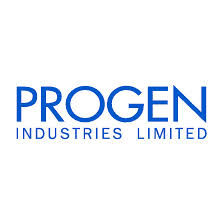预约演示
更新于:2025-05-07
aFGF x VEGF-A x bFGF
更新于:2025-05-07
关联
1
项与 aFGF x VEGF-A x bFGF 相关的药物作用机制 VEGF-A抑制剂 [+2] |
在研机构 |
最高研发阶段临床3期 |
首次获批国家/地区- |
首次获批日期1800-01-20 |
12
项与 aFGF x VEGF-A x bFGF 相关的临床试验NCT01402908
A Prospective, Randomized, Double-blind, Placebo Controlled, Parallel-group, International Multicenter Phase III Trial of PI-88 in the Adjuvant Treatment of Subjects With Hepatitis Virus Related HCC After Surgical Resection
The purpose of this study is to determine if PI-88 is effective and safe in patients who have had surgery to remove primary liver cancer.
开始日期2011-08-01 |
申办/合作机构  乾境生物技术有限公司 乾境生物技术有限公司 [+1] |
EUCTR2007-005011-25-ES
A prospective, randomised, double-blind, placebo-controlled, parallel-group, international multicentre phase III trial of PI-88 in the adjuvant treatment of post-resection hepatocellular carcinomaEstudio Fase III, internacional, multicéntrico, prospectivo, aleatorizado, doble-ciego y controlado con placebo, de grupos paralelos de PI-88 en el tratamiento adyuvante de carcinoma hepatocelular post-resección (Pathway) - PATHWAY
开始日期2008-02-13 |
申办/合作机构- |
NCT00568308
A Prospective, Randomized, Double-blind, Placebo-controlled, Parallel-group, International, Multicentre Phase III Trial of PI-88 in the Adjuvant Treatment of Post-resection Hepatocellular Carcinoma
The purpose of this study is to determine if PI-88 is effective and safe in patients who have had surgery to remove primary liver cancer.
开始日期2007-12-01 |
申办/合作机构 |
100 项与 aFGF x VEGF-A x bFGF 相关的临床结果
登录后查看更多信息
100 项与 aFGF x VEGF-A x bFGF 相关的转化医学
登录后查看更多信息
0 项与 aFGF x VEGF-A x bFGF 相关的专利(医药)
登录后查看更多信息
29
项与 aFGF x VEGF-A x bFGF 相关的文献(医药)2024-07-01·Cytokine
The landscape of angiogenesis and inflammatory factors in eyes with myopic choroidal neovascularization before and after anti-VEGF injection
Article
作者: Li, Haichun ; Wang, Tong ; Lu, Lin ; Zhao, Xiujuan ; Li, Yonghao ; Zhan, Jinlian ; Lian, Ping ; Chen, Shida ; Wu, Qingxiu ; Liu, Bingqian
2022-10-01·Annals of Palliative Medicine
Network pharmacology-based prediction of inhibiting leukocyte recruitment and angiogenesis of total glucosides of peony against rheumatoid arthritis
Article
作者: Zhang, Na ; Hao, Jian ; Li, Xin ; Sun, Wenwen ; Wei, Wei ; Qi, Fumin ; Su, Li ; Wang, Hui
2022-07-01·Journal of Endodontics2区 · 医学
Dental Pulp Cell Conditioning through Polyinosinic-Polycytidylic Acid Activation of Toll-like Receptor 3 for Amplification of Trophic Factors
2区 · 医学
Article
作者: Ayenew, Liya ; Sabatini, Camila ; Khan, Taha ; Hall, Richard ; Lee, Techung
分析
对领域进行一次全面的分析。
登录
或

生物医药百科问答
全新生物医药AI Agent 覆盖科研全链路,让突破性发现快人一步
立即开始免费试用!
智慧芽新药情报库是智慧芽专为生命科学人士构建的基于AI的创新药情报平台,助您全方位提升您的研发与决策效率。
立即开始数据试用!
智慧芽新药库数据也通过智慧芽数据服务平台,以API或者数据包形式对外开放,助您更加充分利用智慧芽新药情报信息。
生物序列数据库
生物药研发创新
免费使用
化学结构数据库
小分子化药研发创新
免费使用


